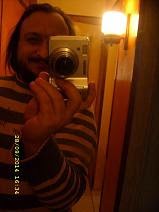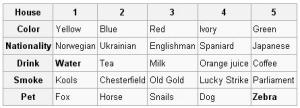Accumulator:
Х Х Х ХХХХX —> 1 2 3 - low bits
| | | | | | | |
1713117 5 3 2 1
Register R0:
Х Х Х Х Х Х Х Х
| 43 | 41 | 37 | 31 | 29 | 23 | 19 |
00000000 = 0 |
00000001 = 1 | “one“
00000010 = 2 | “two“
00000100 = 3 | “three“
00000110 = 4 | 3 two
00001000 = 5 | “four“
00001001 = 6 | 5 one
00010000 = 7 | “five“
00010001 = 8 | 7 one
00010010 = 9 | 7 two
00010100 = 10| 7 three
00100000 = 11| “six“
00100001 = 12| 11 one
01000000 = 13| “SEVEN“
01000001 = 14| 13 one
01000010 = 15| 13 two
01000100 = 16| 13 three
10000000 = 17| “EIGHT“
Every prime number, which is not low bit is able to be presented in more than one way.
It is always better to present one number with smaller bits.
Calculation rules
Sum:
Case А) ? no double bit:
01000100 = 16
+
00001001 = 6
=
01001101 = 22
Case B) ? the double bit is presented through lower bits:
01000100 = 16 = 13 three
+
00010100 = 10 = 7 three
=
01010100 =
+
00000100 = 00000011
=
01010111 = 26
01000000 = 13 = 13
+
01000001 = 14 = 13 one
=
01000001
+
01000000 = 00100010
=
01100011 = 27
01000001 = 14 = 13 one
+
01000010 = 15 = 13 two
=
01000011
+
01000000 = 00011000
=
00011011 = 29
We sum А and B, A>B
I. А+B=C+D , when C is a number including all significant bits no matter their repeating, and D consists only of double bits.
- D=E+F+… ; E, F ? numbers consisted only from one digit
Conclusion: Since the actual discharge means multiplication of the unit with a prime number, and because the numbers are hole, transformations II are actually bringing the numbers to end chain fractiones.
Substraction:
01000100 = 16 = 00100110 = 2+3+11
-
00001001 = 6 = 00000111 = 1 + 2 + 3
=
000010110 = 10
Substraction А from B, А>B
А and B are divided to significant bits with lower rates;
А-B = D-E ,E ?
The action is repeating until:
X=00000000 (0) или X=00000001 (1)
X=0 , the result is D
X=1, analogic -> try it yourself
Multiplication:
00001000 = 5 = 00000110 = 2+3
*
00001001 = 6 = 00000111 = 1 + 2 + 3
=
11000000 = 30 = 2*3*5 = 00000010
*
00000100
*
00001000
=
(2*3)*5
2*3
=
00000010
*
00000100
=
00000100
+
00000100
=
00000111=6
(2*3)*5
=
……….
Multiplication is alike sum !
…..
General conclusion: This kind of processor would be much faster and efficient.
Conclusion: One 9-bit processor should be much more precise at the point.
X Х Х Х ХХХХX —> 1 2 3
| | | | | | | | |
19171311 7 5 3 2 1
13 17 19 highest bits !
There is geometrical-physical matter !
1 is point, and 13+17+19=7*7 =circle*circle = Sphere








